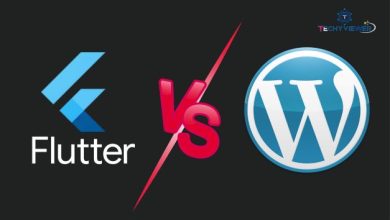UI vs. UX: Their Potential Impact On Website Performance
In this еra, the relationship between UI and UX stands strong, as it helps improve the website’s performance. UI deals with appearance and function, whereas the user experience is the overall experience and satisfaction. Thus, this blog will look at complete information on UI and UX and how they impact a website’s performance in today’s digital age.
Yes, it cannot be denied that a good UI and UX can make a website successful. It is the core that makes the website powerful and user-friendly. A modern website has a powerful and user-oriented nature because it combines an interesting UI with a smooth UX.
The user interface ensures that a visitor is attracted to the site with an appealing environment in the digital realm. Moreover, UX looks at the user experience as not just to be functional but to experience something valuable.
To give you a better understanding, this article will deal with the conceptual framework of UI and UX and their undeniable influence on website efficiency. You will explore the key principles of web design.
Understanding UI and UX
User Interface (UI)
User Interface (UI) refers to the visual elements of a digital product that users interact with. It includes design components like buttons, icons, and layout, focusing on creating an aesthetically pleasing and intuitive interface.
A well-crafted UI enhances the overall user experience by making interactions visually appealing and user-friendly.
User Experience (UX)
However, user experience (UX) encompasses the interactive satisfaction the user has with any component of an app or a site. User-friendliness, site navigation, and customer satisfaction are important factors in a website.
It guarantees ease of use, quick access to information as well, and easy completion of several tasks for high UX.
The Interplay Between UI and UX
A sеductivе UI pairеd with a poor user experience creates a dangerous situation. Because the attractive UI may draw initial attention, a frustrating UX leads to swift repulsion. This results in high bounce rates, tarnished brand perception and lost conversions.
The interaction between UI and UX is vital for sustained user engagement. A captivating UI is attractive, but it’s the simple UX that retains and satisfies the user, reducing bounce rates and nurturing positive brand associations.
This synergy ensures not just user acquisition but long-term loyalty, making the UI/UX intеrplay integral to a website’s performance, impacting metrics, reputation, and overall business success.
Nеglеcting the intеrplay between UI and UX can lead to detrimental consequences, emphasizing the importance of a holistic and user-centric approach in web design. So, let’s look at how these UIs and UXs impact a website’s performance.
Check Also: The Pros and Cons of Python Programming Language for Web Development
Impact of UI on Website Performance
First impressions matter.
The user interface (UI) is the first thing that one sees about the website upon accessing it. First impressions are all about visual appeal and organization for web visitors to make an impression.
Clear visual design and a well-organized site encourage interaction and a good impression on the website. However, on the other hand, the combinations of elements like color schemes, typography, and images shape the impression of the brand or content as people see it.
Navigation and usability
An intuitive UI ensures predictive interactions and easy navigation. Clear menus, buttons, and a logic-oriented layout of pages will enable users to navigate the website without much struggle.
Branding and recognition
Reusing UI elements builds awareness of the brand consistently. Logos, colors, and other visual components form an integrated user experience with links back to the identity of the brand.
Brand awareness provides the trust that encourages users to spend more time on the site. However, it makes users interact more with the web content, leading to an improved user experience.
Load time optimization
Load time is dependent on specific UI components that constitute a website. Users can get irritated and quit the site if it takes a longer time for a page to load due to too many graphics or huge, unoptimized images. Therefore, optimizing them becomes a necessity.
Compressing images, leveraging browser caching, minimizing HTTP requests, and utilizing Content Delivery Networks (CDNs) can help you optimize loading time. Simplify the UI components for faster load times and user attention.
User feedback and iterative improvement
Monitoring user interactions with UI elements provides valuable insights. Analyzing user feedback, click-through rates, and heatmaps allows for iterative improvements in UI design.
Continuous improvements based on user feedback contribute to a dynamic and evolving UI that aligns with user preferences and enhances wеbsitе over time.
Impact of UX on Website Performance
Reduced bounce rates
A good UX enables a seamless user experience that minimizes bounce rates. Visitors who find it easy to search for what they need and like navigating the site are likely to click through many pages and stay longer at the site. This means that low bounce rates promote the idea to the search engines that the site is of good quality and has relevant content.
Increased conversions
UX directly influences conversion rates and therefore, it’s important to understand the various UX design challenges and resolve them with appropriate solutions .
A well-designed user journey, from landing on the site to completing a desired action, enhances conversions. Elеmеnts likе clear calls-to-action, structured checkout processes, and user-friendly forms contribute to a positive UX and higher conversion rates.
Accessibility and inclusivity
Accessibility is also part of UX. Websites that are inclusive and cater to users with diverse needs provide a positive experience for everyone. Prioritizing accessibility expands the potential audience and also aligns with ethical and legal standards.
User retention
A delightful UX encourages repeat visits and fosters user loyalty, meeting user expectations. Positive user experiences are likely to be shared, leading to organic growth through word-of-mouth and positive online reviews.
Emotional connection and brand perception
UX influences the emotional connection users form with a website. Positive emotional experience enhances the brand perception and contributes to the development of a strong brand-consumer relationship.
Thoughtful UX design, considering factors like user emotions and expectations, creates a lasting impression, positively impacting how users perceive and interact with the brand.
Cross-device consistency
Cross-device constancy enhances the user experience, aligns with modern search engine algorithms, and helps improve search rankings globally. A well-designed UX ensures a consistent experience across various devices and a seamless transition from desktop to mobile, which contributes to user satisfaction.
Check Also: Why choose Magento Web Development to Outshine your eCommerce Store?
Then, which of them is the most crucial?
UI and UX have equal contributions to the success of web pages. However, UI emphasizes visual items and good looks as opposed to a user’s journey, functionality, and user experience.
Let us look at it with an example of a very popular brand: the AirBnb website. Recently, they have revamped their website and incorporated enhanced UI and UX design. The resultant website is extremely visually appealing, using beautiful pictures, sensible navigation, and appropriate corporate branding.
However, the user experience (UX) was also improved by streamlining the booking process, better searching, and incorporating personalized recommendations. It resulted in an aesthetically captivating UI that offers a user-oriented experience. It transformed it into an engaging and user-friendly site, ultimately becoming the best website design model.
Top Leading Companies with Enhanced UI/UX Designs
Here are a few notable companies that have reworked their responsive UI/UX designs and have witnessed a considerable impact on their businesses.
Apple
Apple has had an easy UI for decades, and it gives a clear, intuitive, and simple interface and a smooth user experience.
Netflix
Netflix is praised for its user-oriented design, which provides smooth streaming. The site has simple navigation where one does not need a search engine to find what they need, and still get highly customized recommendations with an attractive look.
Airbnb
Airbnb provides an attractive and intuitive interface. The site and the app have smart usability, good graphics, and a clear booking procedure to make for good UX.
Amazon
Somehow, Amazon succeeded thanks to its never-ceasing attention to customer interface. This e-commerce giant has prioritized ease of navigation, personalized recommendations, and a smooth checkout process.
Conclusion
The role of UI and UX in website performance in the digital sphere is undeniable. To achieve this balance, one must have in-depth knowledge of user behavior, design principles, and the industry trends that are changing continually.
The benefits of a successfully implemented UI/UX strategy are felt not only in enhanced performance figures but also in the satisfaction and loyalty of the website’s clientele.
Therefore, stop delaying any further, improve the UI/UX design of your site, and increase its performance level altogether.



